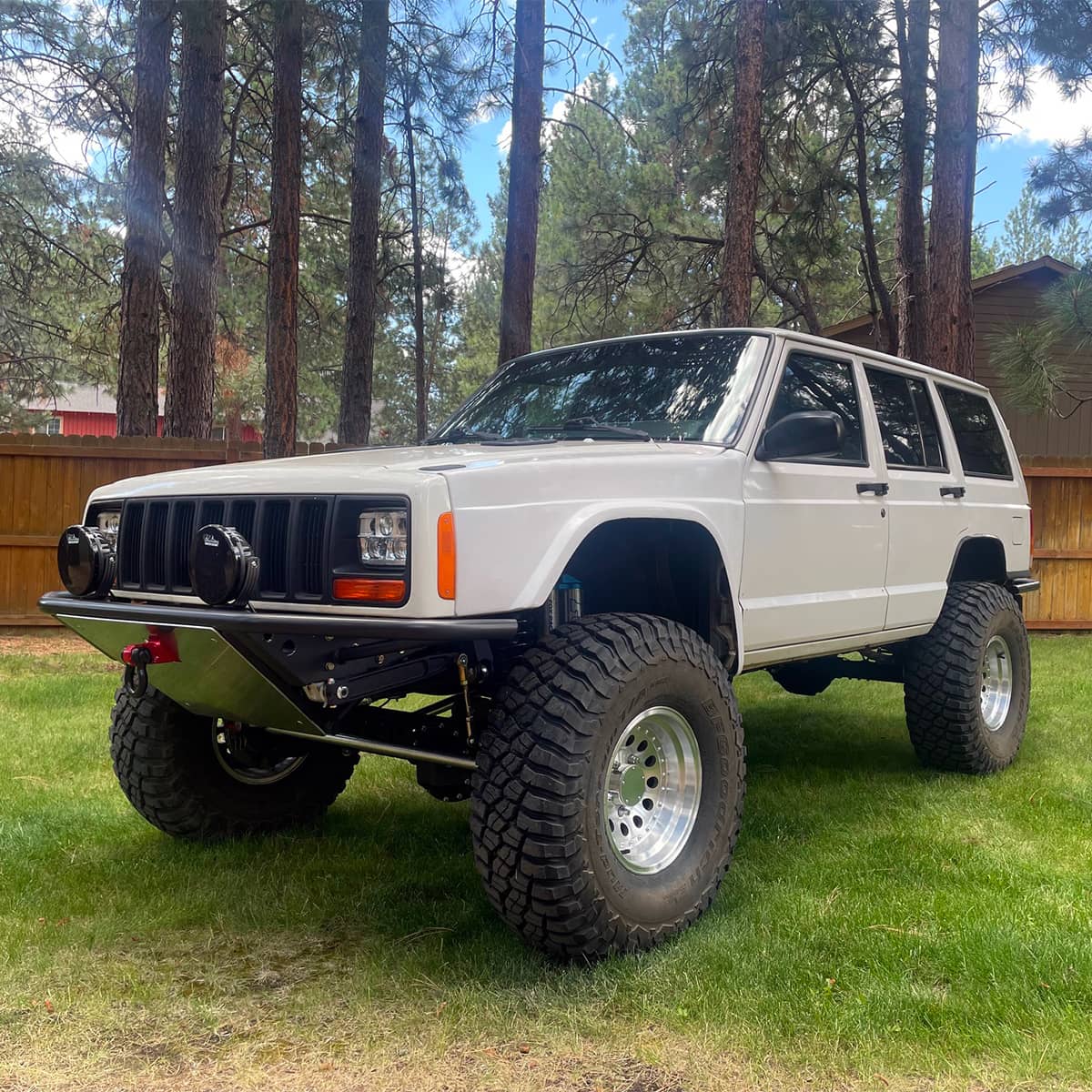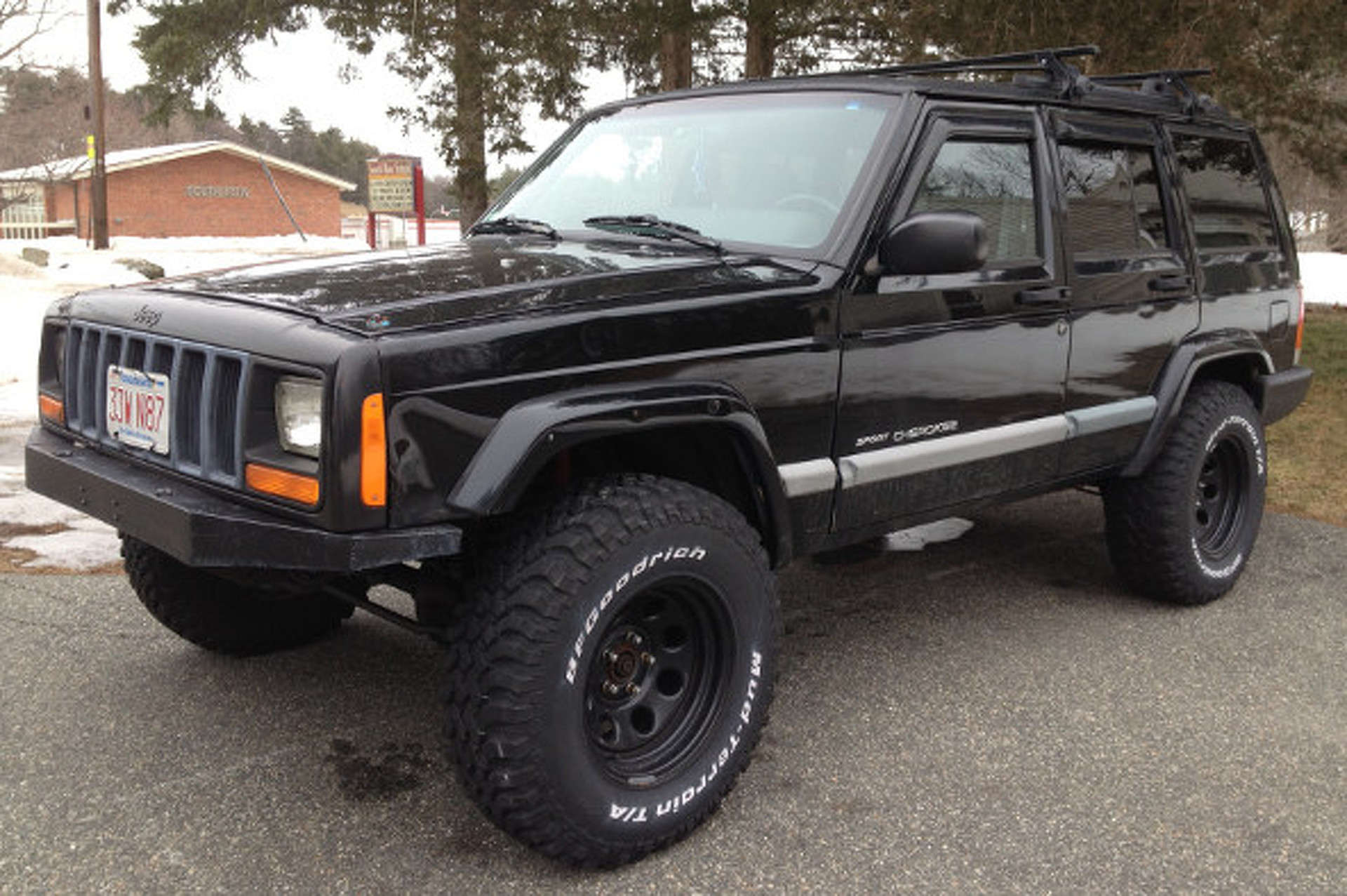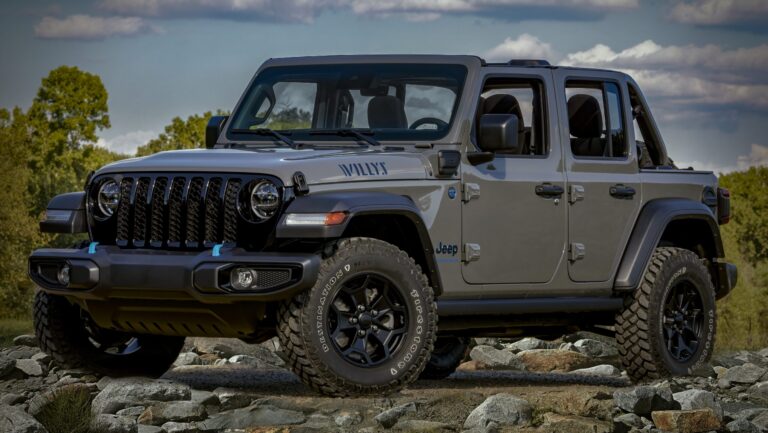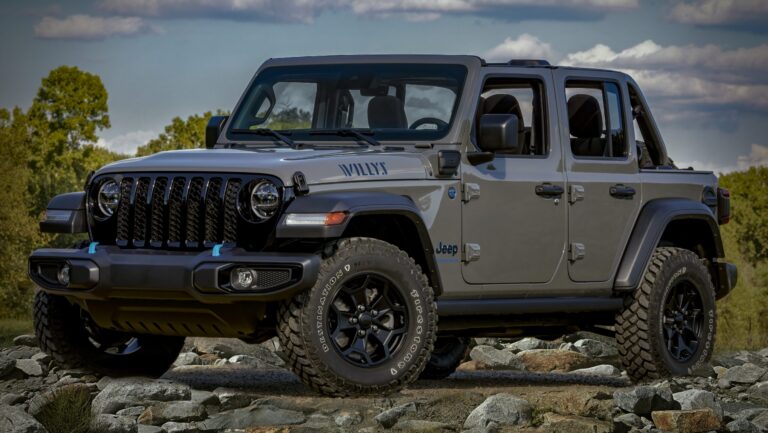Used Rims For Jeep Cherokee XJ Sport For Sale Near Me: A Comprehensive Guide
Used Rims For Jeep Cherokee XJ Sport For Sale Near Me: A Comprehensive Guide jeeps.truckstrend.com
The Jeep Cherokee XJ, particularly the Sport trim, holds a special place in the hearts of off-road enthusiasts and daily drivers alike. Known for its rugged durability, classic boxy aesthetics, and surprising capability, the XJ remains a highly sought-after vehicle. As these iconic SUVs age, owners often find themselves in need of replacement parts, or perhaps eyeing an upgrade to enhance their vehicle’s performance or appearance. Among the most common items sought are rims, whether to replace a damaged set, change the look, or accommodate larger tires for off-road adventures.
Searching for "Used Rims For Jeep Cherokee XJ Sport For Sale Near Me" isn’t just about finding any wheels; it’s about finding the right wheels. This guide will delve deep into everything you need to know about purchasing used rims for your beloved XJ Sport, from understanding crucial specifications to inspecting potential buys, and navigating the various marketplaces to secure the perfect set. Opting for used rims can be a highly cost-effective and environmentally conscious choice, offering a vast array of styles, from classic OEM designs to robust aftermarket options, all without breaking the bank.
Used Rims For Jeep Cherokee XJ Sport For Sale Near Me: A Comprehensive Guide
Understanding Your Jeep Cherokee XJ Sport’s Rim Specifications
Before you even begin your search, it’s paramount to understand the precise specifications of the rims that will fit your Jeep Cherokee XJ Sport. Getting these details wrong can lead to costly mistakes, fitment issues, and potential safety hazards. The XJ platform is quite specific, and while some components are interchangeable with other Jeep models, rims require careful attention to detail.
- Bolt Pattern (PCD – Pitch Circle Diameter): This is arguably the most critical specification. For all Jeep Cherokee XJ models (1984-2001), the bolt pattern is 5×4.5 inches (or 5×114.3mm). This means there are five lug nuts, and the bolts are arranged on a circle with a diameter of 4.5 inches. Do not deviate from this pattern unless you plan to use wheel adapters, which introduce their own considerations and potential issues.
- Diameter: Stock XJ rims typically range from 15 to 16 inches. While 17-inch rims can be fitted, especially with lift kits, sticking close to the stock diameter or slightly larger (15-17 inches) is generally recommended to avoid excessive rubbing or the need for extensive modifications. The Sport trim often came with 15-inch alloy wheels.
- Width: Most stock XJ rims are 7 or 8 inches wide. Wider rims (e.g., 9-10 inches) are common for larger aftermarket tire setups, but you’ll need to consider backspacing and offset carefully to prevent rubbing on suspension components or fender flares, especially at full lock or suspension compression.
- Backspacing and Offset: These two measurements determine how far the wheel sits inward or outward relative to the hub.
- Backspacing: Measured from the mounting surface to the wheel’s inner edge. Stock XJ rims typically have backspacing in the range of 5.25 to 5.75 inches. Lower backspacing (e.g., 4-4.5 inches) pushes the wheel further out, which is often desirable for wider tires or a more aggressive stance, but can lead to rubbing on fender flares without a lift.
- Offset: Measured from the wheel’s centerline to the mounting surface. Positive offset means the mounting surface is towards the outside of the wheel, while negative offset means it’s towards the inside. Stock XJ rims have a positive offset. Aftermarket rims for XJs often feature a slight negative offset or zero offset to provide more clearance for wider tires.
- Why they matter: Incorrect backspacing or offset can cause tires to rub on leaf springs, control arms, or fender flares, especially when turning or during suspension articulation.
- Center Bore: This is the hole in the center of the wheel that fits over the hub. For the XJ, the center bore is 71.5mm. While many aftermarket wheels have a larger center bore and rely on lug nuts for centering (lug-centric), it’s ideal to have hub-centric wheels or use hub-centric rings to ensure proper balance and reduce vibration.
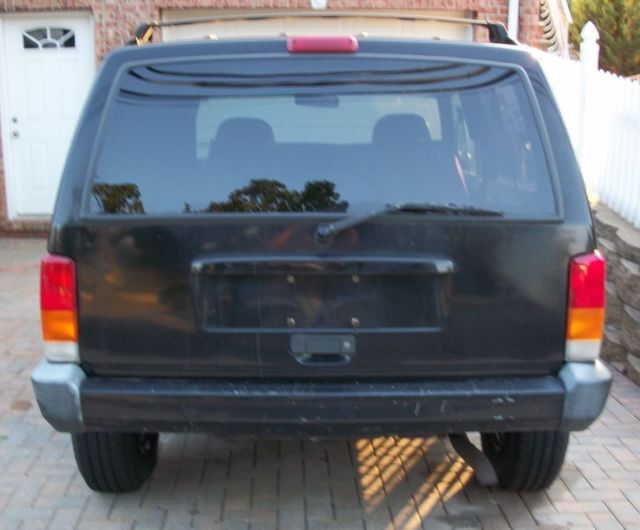
Knowing these specifications cold will arm you with the knowledge needed to quickly determine if a used rim is a viable option for your XJ Sport.
Why Choose Used Rims for Your XJ Sport?
There are several compelling reasons why purchasing used rims for your Jeep Cherokee XJ Sport can be an excellent decision:
- Significant Cost Savings: This is the most obvious benefit. Used rims are almost always considerably cheaper than their new counterparts. This allows you to allocate more of your budget to other upgrades, maintenance, or even better quality tires.
- Variety and Availability: The XJ has been around for decades, meaning there’s a vast secondary market for its parts. You can find a wide array of OEM styles (some of which are discontinued new) and a plethora of aftermarket designs that might not be readily available new today. This opens up opportunities for unique customization.
- Sustainability: Buying used is an eco-friendly choice. It reduces demand for new manufacturing, conserves resources, and keeps items out of landfills, contributing to a more sustainable automotive hobby.
- Immediate Gratification: Unlike ordering new rims that might have lead times, used rims are often available for immediate pickup, allowing you to get your Jeep back on the road or sporting its new look much faster.
- Testing Ground: If you’re experimenting with different wheel sizes, widths, or offsets before committing to a specific setup, used rims offer an affordable way to test fitment and aesthetics without a significant financial commitment.
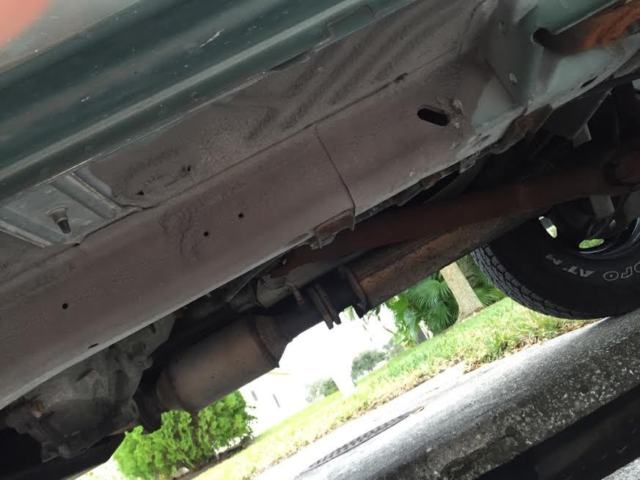
Where to Find Used Rims For Your XJ Sport Near You
Locating used rims requires a bit of savvy searching and patience. Here are the best avenues to explore:
-
Local Classifieds and Online Marketplaces:
- Facebook Marketplace: An absolute goldmine for local finds. Use specific search terms like "Jeep XJ rims," "Cherokee rims 5×4.5," or "XJ Sport wheels." Filter by location to find sellers "near me."
- Craigslist: Similar to Facebook Marketplace, but sometimes has different listings. Be sure to check the "auto parts" section.
- OfferUp/LetGo (merged): These apps are designed for local buying and selling and can yield good results.
- Tips: Set up alerts for new listings. Don’t be afraid to broaden your search radius slightly if you’re willing to drive.
-
Jeep Forums and Enthusiast Groups:
- Dedicated XJ Forums: Websites like CherokeeForum.com or NAXJA (North American XJ Association) often have "For Sale" sections where members list parts. These are great because sellers are usually fellow enthusiasts who know the specs and can provide accurate information.
- Local Jeep Clubs/Facebook Groups: Search for local Jeep or off-roading clubs on Facebook. Many members are constantly upgrading and selling their old parts. This also offers a chance to meet fellow enthusiasts.
-
Junkyards/Salvage Yards:
- "Pull-Your-Own-Part" Yards: These can be treasure troves. Call ahead or check their online inventory for Jeep Cherokee XJs. You’ll likely find steel wheels, but sometimes alloy wheels are available. Prices are often very low. Be prepared to remove the wheels yourself.
- Full-Service Salvage Yards: They might have wheels already pulled and priced. Always ask about the condition.
-
Used Tire Shops / Wheel Dealers:
- Some independent tire shops or specialized used wheel dealers keep an inventory of used rims. They might even offer mounting and balancing services. Call around to local shops and ask if they carry 5×4.5 Jeep wheels.
-
eBay (with local pickup filter): While primarily an online shipping platform, eBay allows you to filter listings for "local pickup." This can be useful for finding sellers within a drivable distance who prefer not to ship heavy items.
What to Inspect When Buying Used XJ Rims
Once you’ve found a potential set of rims, a thorough inspection is crucial. Don’t let the excitement of a good deal blind you to potential flaws.
- Cracks: This is the most critical issue. Carefully inspect the entire rim, especially around the lug holes, spokes, and the inner barrel, for any hairline cracks. Even small cracks can compromise structural integrity and be dangerous.
- Bends and Dents: Spin the wheel by hand (if possible) and look for any wobbles or unevenness. Check the lip and inner barrel for flat spots, bends, or severe dents. Minor curb rash is often cosmetic, but significant bends can affect balancing and tire seating.
- Corrosion/Rust: For steel wheels, excessive rust can weaken the structure. For alloy wheels, corrosion can occur under the paint or around the lug holes, potentially leading to issues. Pay close attention to the tire bead seating surface; heavy corrosion here can prevent the tire from sealing properly.
- Tire Bead Seating Surface: This area, where the tire mounts to the rim, must be smooth and free of major pits, dents, or heavy corrosion to ensure a proper seal and prevent slow leaks.
- Lug Hole Integrity: Ensure the lug holes are not ovaled, cracked, or severely worn, which can lead to improper lug nut seating and wheel wobble.
- Matching Set: Confirm that all rims in the set are identical in terms of size, width, backspacing/offset, and style. Subtle differences can lead to handling issues or uneven wear.
- Valve Stems: While easily replaceable, check if the existing valve stems are in good condition.
- Overall Condition: Assess the cosmetic condition. Minor scratches or faded paint might be acceptable for a trail rig, but if you’re looking for aesthetics, consider if the cost of refurbishment is worthwhile.
Popular OEM and Aftermarket Used Rims for XJ Sport
The XJ has seen many factory wheel options over its production run, and a vast aftermarket supports it.
Popular OEM XJ Rims:
- Ecco: A common 15×7 alloy wheel, often seen on Sport trims.
- Canyon: Another popular 15×7 alloy, known for its five-spoke design.
- Grizzly: A more robust-looking 15×7 alloy, often found on later models.
- Ravine: Originally from the TJ Wrangler, but a very popular 15×8 (and 16×8) choice for XJs, often requiring a slight lift or minor fender trimming for wider tires due to their 5.5" backspacing.
- Moab: Originally from the TJ Rubicon, these 16×8 wheels (5×4.5 bolt pattern) are highly sought after. They have a 5" backspacing and look fantastic on a lifted XJ, but often require hub-centric rings and careful tire selection.
Popular Aftermarket Used Rims:
- Steel Wheels: Companies like Cragar (D-window, Soft 8), Pro Comp, and Summit Racing offer inexpensive and durable steel wheels. These are often black, robust, and popular for off-roading due to their strength and ease of repair.
- Alloy Wheels: Brands like Method Race Wheels, Fuel Off-Road, Mickey Thompson, and American Racing are popular choices. These come in various designs, sizes, and offsets, allowing for significant customization.
Steel vs. Alloy:
- Steel Rims: Generally heavier, stronger, and more resistant to bending. If they do bend, they are often easier to hammer back into shape on the trail. More affordable.
- Alloy Rims: Lighter, which can improve ride quality, fuel economy, and brake performance. More aesthetically pleasing designs. Can crack under severe impact, which is harder to repair than a bent steel wheel. More expensive.
The Installation Process and Beyond
Once you’ve acquired your used rims, the next steps involve installation and ensuring everything is road-worthy.
- Professional vs. DIY: While removing and installing wheels is straightforward, mounting and balancing tires require specialized equipment. It’s highly recommended to have a professional tire shop mount and balance your tires on your new-to-you rims. They can also inspect the rims for true-ness on a balancer.
- Lug Nuts: Always ensure you have the correct lug nuts for your new rims. Aftermarket rims often require different lug nuts (e.g., spline drive, tuner style, or acorn seat) than OEM rims. Never reuse old, worn lug nuts.
- Balancing and Alignment: Proper wheel balancing is crucial to prevent vibrations and uneven tire wear. After installing new rims and tires, it’s also a good idea to get a wheel alignment, especially if you’ve changed tire size or rim offset significantly, or if your suspension components are showing wear.
- Tire Considerations: The rims you choose will dictate the tire sizes you can run. Larger rims might necessitate larger tires, which in turn might require a lift kit and fender trimming for clearance. Always check tire manufacturer specifications for recommended rim widths.
- Monitoring: After installation, drive a short distance and re-torque your lug nuts. Check them again after 50-100 miles. Monitor for any vibrations, unusual noises, or changes in handling.
Potential Challenges and Solutions
While buying used rims is often rewarding, there can be hurdles:
- Finding a Complete Matching Set: It can be challenging to find four or five identical rims in good condition from a single seller.
- Solution: Be patient. Broaden your search radius. Consider buying two pairs from different sellers if they are identical. Don’t be afraid to buy a single spare if you find one at a good price.
- Dealing with Damaged Rims: You might encounter listings with minor damage.
- Solution: For purely cosmetic issues, factor in the cost of powder coating or painting. For minor bends, some wheel repair shops can fix them, but major structural damage means walking away.
- Negotiation: Sellers often list items higher than their expected selling price.
- Solution: Always try to negotiate, especially if you find minor flaws or are paying cash. Research similar listings to get an idea of fair market value.
- Non-Local Finds: Sometimes the perfect set is a few hours away.
- Solution: Consider a road trip if the deal is good enough. If shipping is the only option, factor in the high cost of shipping heavy, bulky items. Local pickup is always preferred.
- Compatibility with Lift Kits/Suspension: Rims that fit a stock XJ might rub on a lifted one, or vice-versa, depending on the specific lift and tire size.
- Solution: Research how different backspacing/offset combinations interact with your specific lift kit and tire size. Consult XJ forums and ask other owners with similar setups.
Price Table for Used Rims for Jeep Cherokee XJ Sport (Approximate Ranges)
Please note: Prices for used rims vary widely based on condition, rarity, location, and seller. This table provides a general estimate for a single rim. A set of four or five will usually be a better deal per rim.
| Rim Type/Style (Common) | Diameter (Inches) | Width (Inches) | Bolt Pattern | Backspacing (Approx.) | Condition | Approximate Price Range (Per Rim) | Notes |
|---|---|---|---|---|---|---|---|
| OEM Alloy (Ecco, Canyon) | 15 | 7 | 5×4.5 | 5.25" – 5.75" | Fair | $25 – $40 | Minor curb rash, some oxidation |
| 15 | 7 | 5×4.5 | 5.25" – 5.75" | Good | $40 – $70 | Clean, minimal flaws | |
| 15 | 7 | 5×4.5 | 5.25" – 5.75" | Excellent | $70 – $100+ | Near perfect, rare find | |
| OEM Alloy (Grizzly, Ravine) | 15 or 16 | 7 or 8 | 5×4.5 | 5.0" – 5.5" | Fair | $30 – $50 | More sought after, higher base price |
| 15 or 16 | 7 or 8 | 5×4.5 | 5.0" – 5.5" | Good | $50 – $80 | ||
| 15 or 16 | 7 or 8 | 5×4.5 | 5.0" – 5.5" | Excellent | $80 – $120+ | ||
| Aftermarket Steel (Cragar D-Window, Soft 8) | 15 or 16 | 7 or 8 | 5×4.5 | 3.75" – 4.5" | Fair | $20 – $35 | Scratches, some rust, good for trail rig |
| 15 or 16 | 7 or 8 | 5×4.5 | 3.75" – 4.5" | Good | $35 – $60 | Minimal rust, ready to use | |
| 15 or 16 | 7 or 8 | 5×4.5 | 3.75" – 4.5" | Excellent | $60 – $85+ | Freshly painted, like new | |
| Aftermarket Alloy (Basic Brands) | 15, 16, 17 | 8, 9 | 5×4.5 | 3.5" – 4.75" | Fair | $40 – $70 | Curb rash, oxidation |
| 15, 16, 17 | 8, 9 | 5×4.5 | 3.5" – 4.75" | Good | $70 – $120 | Minor cosmetic flaws | |
| 15, 16, 17 | 8, 9 | 5×4.5 | 3.5" – 4.75" | Excellent | $120 – $200+ | High-end brands, near perfect | |
| OEM Moab (from TJ Rubicon) | 16 | 8 | 5×4.5 | 5.0" | Fair | $70 – $100 | Popular, often need refurbishment |
| 16 | 8 | 5×4.5 | 5.0" | Good | $100 – $150 | ||
| 16 | 8 | 5×4.5 | 5.0" | Excellent | $150 – $250+ | Rare in excellent shape |
Frequently Asked Questions (FAQ)
Q1: What is the exact bolt pattern for a Jeep Cherokee XJ Sport?
A1: The bolt pattern for all Jeep Cherokee XJ models (1984-2001) is 5×4.5 inches or 5×114.3mm.
Q2: Can I put larger rims (e.g., 17-inch) on my XJ without a lift?
A2: While technically possible, putting 17-inch rims on a stock XJ without a lift kit can lead to rubbing issues, especially with larger tires. It’s generally recommended to have at least a 2-3 inch lift for 17-inch rims, depending on tire size and rim backspacing/offset.
Q3: Do I need new lug nuts for used rims?
A3: It depends on the type of rim. OEM Jeep rims typically use acorn-style lug nuts. However, many aftermarket rims require different types, such as spline drive or tuner lug nuts, or different seat styles (e.g., conical vs. spherical). Always verify with the seller or a tire shop. It’s generally a good idea to get new lug nuts if the old ones are worn or if the new rims require a different style.
Q4: How do I check for bent rims before buying?
A4: Visually inspect the rim for any obvious flat spots, wobbles, or inconsistencies when rotating it. Check the inner and outer lips. A professional tire shop can put the rim on a balancer to check for true-ness and runout, which is the most accurate method.
Q5: Is it safe to buy used rims?
A5: Yes, it is safe, provided you perform a thorough inspection for cracks, severe bends, and structural damage. Avoid any rims with visible cracks or significant bends, as these can be dangerous. Cosmetic flaws are generally acceptable if they don’t compromise integrity.
Q6: What’s the difference between backspacing and offset?
A6: Both describe how the wheel sits relative to the hub.
- Backspacing: The distance from the mounting surface to the wheel’s inner edge. A lower backspacing number means the wheel sticks out further.
- Offset: The distance from the wheel’s centerline to the mounting surface. Positive offset means the mounting surface is towards the outside (wheel sits further in), while negative offset means it’s towards the inside (wheel sticks out further).
Q7: Can I use rims from other Jeeps (e.g., TJ Wrangler, ZJ Grand Cherokee) on my XJ Sport?
A7: Yes, many rims from the TJ Wrangler and ZJ Grand Cherokee share the same 5×4.5 bolt pattern and can fit the XJ. However, always double-check the diameter, width, and especially the backspacing/offset, as these can vary and might cause fitment issues without modifications. For example, some TJ Wrangler rims have different backspacing that can cause rubbing on the XJ’s leaf springs or control arms.
Conclusion
Finding the perfect "Used Rims For Jeep Cherokee XJ Sport For Sale Near Me" is a rewarding endeavor that combines practical vehicle maintenance with the thrill of customization. By understanding your XJ’s specific rim requirements, knowing where to look, and performing diligent inspections, you can secure a fantastic deal on a set of wheels that not only enhances your Jeep’s performance and aesthetics but also respects your budget. The XJ Cherokee’s enduring popularity ensures a robust secondary market, offering a wealth of options for every owner, from the dedicated off-roader to the daily driver looking for a refreshed look. Take your time, do your research, and soon your XJ Sport will be rolling on a set of rims that perfectly complement its legendary character.
